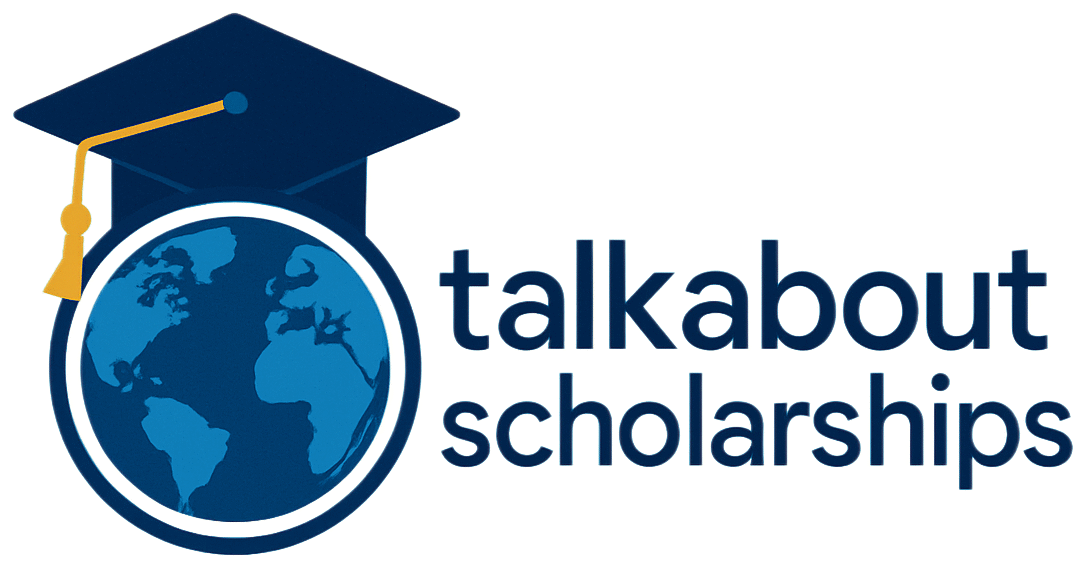
For many students, scholarships are more than just financial assistance—they are the major gateway to higher education, career opportunities, and personal growth. In a world where tuition fees are steadily rising, scholarships alleviate the financial burden and enable students to pursue their dreams without incurring substantial debt.
But while good grades and test scores help, scholarship committees often turn to one deciding factor: the scholarship essay. This single essay gives students a voice. It shows not just what you’ve accomplished, but who you are, what drives you, and how you align with the goals of the scholarship provider.
Think of it this way: your application lists your achievements, but your essay tells your story. Done right, it can make the difference between rejection and a life-changing opportunity.
This detailed guide will walk you through how to write a scholarship essay, from understanding the prompt to polishing your final draft. Along the way, you will find tips, examples, common mistakes to avoid, and a practical checklist to make sure your essay is submission-ready.
What is a Scholarship Essay?
A scholarship essay is a personal narrative written as part of an application for financial aid or academic funding. Unlike academic research papers, which focus on analysis, a scholarship essay highlight storytelling, personal reflection, and persuasion.
It usually revolves around:
- Your background: Family, education, or cultural challenges.
- Your achievements: Academic, extracurricular, or professional milestones.
- Your aspirations: What you hope to achieve with the scholarship.
- Your alignment: How your goals match the scholarship provider’s mission.
In short, it is your golden chance to step out of the numbers and bring your personality, resilience, and ambitions to life.
Why Scholarship Essays Matter
Scholarship committees often receive thousands of applications. Many applicants have similar grades, test scores, and extracurricular activities. So, what sets one candidate apart from another? The essay.
A strong scholarship essay:
- Shows authenticity: Committees want to know the real you, not just statistics.
- Demonstrates values: Your essay reflects whether your personal mission aligns with theirs.
- Highlights potential: It proves that investing in you is worthwhile.
- Secures financial aid: Ultimately, a well-crafted essay can fund your education.
For example, when applying to the ServiceScape Scholarship, your essay must reflect creativity and clear communication—qualities that align with ServiceScape’s mission. Similarly, the Erasmus Mundus Joint Masters Degree emphasizes cultural exchange and global cooperation, so tailoring your essay to those values is essential.
Step-by-Step Guide on How to Write a Scholarship Essay
1. Understanding the Prompt
Every scholarship begins with a question. Before writing a single word, read the prompt carefully.
Examples of prompts:
- “Describe a time you overcame adversity and how it shaped your goals.”
- “Explain how receiving this scholarship will impact your future and life.”
- “Discuss your leadership experience and community involvement.”
How to approach it:
- Highlight action verbs (explain, describe, reflect).
- Break the question into smaller parts.
- Jot down quick responses before drafting.
2. Brainstorming Ideas Before Writing
Many students underestimate brainstorming. Jumping straight into writing often results in generic essays.
Effective brainstorming strategies:
- Mind Mapping: Write the prompt in the center and branch out with related personal experiences.
- List Method: Make lists of your challenges, achievements, and future goals.
- Story Bank: Jot down short, memorable stories from your life.
This pre-writing step ensures your essay has depth and originality, and the maximum chances of your selection.
3. Researching the Scholarship Provider
Scholarship providers each have unique missions. Understanding what they value is key to writing a relevant essay.
Example:
- A community-based scholarship may prioritize volunteer work.
- An international scholarship like Erasmus Mundus looks for cultural adaptability.
- A creative scholarship like ServiceScape may emphasize originality.
Ways to research:
- Read the scholarship’s “About Us” or mission statement.
- Look at previous winners’ essays.
- Explore external resources like Fastweb for essay guidance.
By aligning your essay with the provider’s values, you show that you are not just qualified but also the right fit.
4. Outlining and Structuring Ideas
Without a clear outline, essays can become unfocused and unprofessional.
Recommended structure:
- Introduction – Hook + thesis (what your essay will highlight).
- Body Paragraphs – Each should focus on one main idea (achievements, challenges, goals).
- Conclusion – Summarize, show gratitude, and reinforce your vision.
Think of your essay like a movie script: the intro draws people in, the body develops the story, and the conclusion leaves a lasting impression.
5. Writing a Strong Introduction
First impressions matter. Your opening lines should grab the reader’s attention.
Approaches to try:
- A personal story: “At 14, I translated for my parents during medical appointments. That experience sparked my dream of becoming a doctor.”
- A powerful question: “What would education mean to you if it were the only way out of poverty?”
- A vivid image: “The sound of chalk against the board became the rhythm of my childhood.”
Once you’ve hooked the reader, present a thesis statement that outlines your essay’s direction.
6. Building a Compelling Body
This is where you demonstrate why you deserve the scholarship.
Ideas to cover:
- Achievements: Academic excellence, leadership positions, and awards.
- Challenges: Financial struggles, cultural barriers, and personal setbacks.
- Impact: How these experiences shaped your values.
- Future goals: Where you see yourself in 5–10 years?
Example paragraph:
“Growing up in a rural community with limited resources taught me resilience. I often studied under candlelight when electricity failed, but those nights fueled my determination to succeed. With this scholarship, I can continue my journey toward becoming an engineer committed to sustainable development.”
Notice how it combines challenge, perseverance, and future vision.
7. Writing a Memorable Conclusion
Your conclusion should leave the committee with a strong impression.
Best practices:
- Reinforce your enthusiasm.
- Show gratitude without sounding desperate.
- Connect your future goals with the scholarship’s mission.
Example:
“This scholarship is not just financial support; it represents a partnership in my mission to improve access to healthcare in underserved communities. I am grateful for the opportunity to share my story, and I am committed to making the most of this chance.”
Tips for Standing Out in Scholarship Essays
- Be authentic: Share your unique story instead of clichés.
- Use storytelling: Real-life examples are more powerful than general statements.
- Show growth: Highlight lessons learned from failures or struggles.
- Focus on impact: Explain how your work benefits others, not just yourself.
- Revise thoroughly: Multiple drafts lead to polished writing.
Common Mistakes to Avoid
- Copy-pasting: Never submit the same essay to multiple scholarships without customization.
- Being too generic: Phrases like “I want to make the world a better place” lack depth.
- Ignoring instructions: Word count, format, and topic rules must be followed.
- Overconfidence: Confidence is good, arrogance is not.
- Neglecting proofreading: Grammar and spelling errors signal carelessness.
Scholarship Essay Format and Style
Adhering to proper formatting shows professionalism.
- Word count: Typically 500–1,000 words unless stated otherwise.
- Font: Times New Roman or Arial, 12-point.
- Spacing: Double-spaced with 1-inch margins.
- Tone: Respectful, positive, and personal.
Do’s:
- Use active voice.
- Keep paragraphs concise.
- Be honest about your story.
Don’ts:
- Use slang or text language.
- Rely on clichés.
- Ramble or go off-topic.
Examples of Strong Scholarship Essay Approaches
While every essay is unique, some common themes work well:
- Challenge & Growth: Share a hardship and how it shaped you.
- Leadership: Highlight moments where you guided or inspired others.
- Community Service: Show commitment to helping others.
- Career Vision: Connect your future profession to broader social impact.
Scenario Example:
An applicant to a medical scholarship might write about volunteering in a rural clinic and how that experience inspired their career path.
Advanced Editing and Polishing Techniques
Great essays are rewritten, not just written.
- Read aloud: Helps catch awkward phrasing.
- Peer review: Ask a teacher, mentor, or friend for feedback.
- Professional tools: Use Grammarly or Hemingway for grammar and clarity.
- Time gap: Take a day off before final revisions for a fresh perspective.
Scholarship Essay Checklist
Before submitting, ask yourself:
- ✅ Did I answer the prompt completely?
- ✅ Is my essay authentic and personal?
- ✅ Do I highlight both achievements and challenges?
- ✅ Is the structure clear and logical?
- ✅ Have I proofread for grammar and spelling?
- ✅ Did I connect my goals with the provider’s mission?
This checklist ensures that your essay is polished and ready for submission.
Frequently Asked Questions (FAQs)
1. How long should a scholarship essay be?
Most range from 500–1,000 words unless the provider specifies otherwise.
2. Can I reuse one essay for multiple scholarships?
Yes, but always customize it to match the provider’s goals.
3. Should I mention financial struggles?
If relevant, yes—but balance it with resilience and future goals.
4. Can I include quotes?
Yes, but keep them minimal. Your story should dominate, not someone else’s words.
5. How early should I start writing?
At least 3–4 weeks before the deadline to allow time for drafting and revisions.
Conclusion: Motivation and Encouragement
Writing a scholarship essay can feel intimidating, but it’s also an empowering experience. It allows you to reflect on your journey, articulate your dreams, and present your authentic self to decision-makers who can change your life.
Remember, your story matters. Whether it’s overcoming hardship, contributing to your community, or pursuing a dream career, your essay gives you the platform to shine.
Take time to research, plan, write, and revise. Be genuine, be clear, and most importantly, be yourself. With the right approach, your essay can open doors to opportunities that once felt out of reach.
So, pick up your pen—or open that laptop—and start writing today. The scholarship that transforms your future could be just one essay away.

